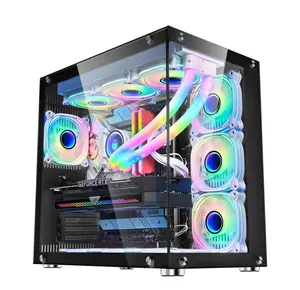الرائج في مجال عملك






خزان صرف مياه إيكوفلو: الحل المستدام لإدارة النفايات نظام AquaGuard الصحي المصنوع من الألياف الزجاجية: احتواء المياه الصرفية بشكل موثوق به
٢٤٨٫١٩ ر.س. - ٢٦٠٫٦٠ ر.س.
لمين: 1 قطعة



ورق تنظيف مرحاض آمن للصرف الصحي صديق للبيئة يزيل البقع أوعية Odors بكفاءة
٤٫٨٩ ر.س. - ٥٫٢٠ ر.س.
لمين: 1000 صندوق







كفء في استهلاك الطاقة وصديق للبيئة: خصائص أحواض التنقية من الألياف الزجاجية في تنقية المياه
١٥٦٫٥١ ر.س. - ١٦٦٫٢١ ر.س.
لمين: 1 قطعة







محطة معالجة مياه الصرف الصحي رخيصة الثمن من المصنع BLX بسعر منخفض
١١٠٬٧٢٨٫١٧ ر.س. - ١٢٩٬٨١٩٫٢٣ ر.س.
لمين: 1 مجموعة







حوض مطبخ مع وعاء مزدوج للصرف الصحي ولفال تصريف الأنابيب، أنبوب صرف نفايات مرن، أنبوب صرف مياه السوائل، أنبوب السيفون أسفل الحوض
١٨٫٣٣ ر.س. - ١٩٫٤٨ ر.س.
لمين: 100 قطعة







مرحاض للبس للرجال للاحتفالات الخارجية والتخييم، مرحاض متنقل محمول مع خزان ترسبي
٢٬١٠٠٫٠٢ ر.س. - ٢٬٥٢٠٫٠٣ ر.س.
لمين: 10 مجموعات




تقدم الشركة المصنعة مباشرةً آبار الصرف الصحي منخفضة السعر عالية الجودة
جاهز للشحن
١١٠٫٧٣ ر.س. - ٦٦٨٫١٩ ر.س.
لمين: 30 مجموعة
الشحن لكل قطعة: ١٥٧٫٣٩ ر.س.






مستشعرات مستوى Scada, مستشعرات مستوى Scada ، خزان الغاز ، مؤشر مستوى الصرف الصحي Lp ، أي نطاق من 1-500 متر 4-20ma 1-5v.0-10v RS485 -20 ℃ ~ + 60 ℃
١٠٣٫١٠ ر.س. - ١٨٣٫٢٨ ر.س.
لمين: 1 قطعة






هوليكل مصنع الصرف الصحي مؤشر على مستوى الخزان ، ومكافحة انسداد مؤشر مستوى
٢٦٣٫٤٦ ر.س. - ٤٩٢٫٥٥ ر.س.
لمين: 1 وحدة






C250 EN124 GRP يغطي خزان المياه غطاء بئر مفصلي SMC مع قفل لولبي غطاء فتحة إدارة
٣٨٫١٩ ر.س.
لمين: 10 قطع


مولد أوزون 100جم 1000مملي جرام قابل للنقل للزراعة المائية لتخزين المياه
٢٤٬٤٣٦٫٥٧ ر.س.
لمين: 10 مجموعات





مواصفات المضخة الغاطسة مع المكره بئر/بالوعة المرحاض مضخة مصنعين
جاهز للشحن
١٬٠٩٩٫٦٥ ر.س. - ١٬١٣٠٫٢٠ ر.س.
لمين: 2 مجموعة
الشحن لكل قطعة: ٣٠٥٫٤٢ ر.س.



عالية الجودة الكهربائية للصرف الصحي طاحونة قطع مضخات مضخة غاطسة الصرف الصحي
١٩٠٫٩٢ ر.س. - ١٬٩٠٩٫١١ ر.س.
لمين: 1 قطعة






النفايات الكهربائية مضخة النفايات الصلبة غير سداد بئر/بالوعة المرحاض مضخة مياه الصرف الصحي
١٠٬٣٠٩٫١٨ ر.س. - ١٠٬٦٨٣٫٣٦ ر.س.
لمين: 1 مجموعة






تستخدم شاحنة خزان شفط مياه الصرف 8000l بئر/بالوعة المرحاض الصرف الصحي فراغ شاحنة شفط للبيع
١٣٤٬٧٨٢٫٩١ ر.س. - ١٣٦٬٦٩٢٫٠٢ ر.س.
لمين: 1 وحدة






خلاط ومحراث مياه صرفة غاطس من الصلب المقاوم للصدأ QJB عالي السرعة 2.2 كيلو وات
٣٬٨١٨٫٢٢ ر.س.
لمين: 1 قطعة
الشحن لكل قطعة: ٥٩٦٫٧٩ ر.س.






خزان التبول الصحي 315 طن صينية الشاي تركيبات الحمام من الألياف الزجاجية ماكينة الضغط بالحرارة
٤٩٬٦٣٦٫٧٧ ر.س. - ٥٧٬٢٧٣٫١٩ ر.س.
لمين: 1 مجموعة






سائل غير مشبع تسليم المصنع ، راتنج فرب ، يستخدم لخط الأنابيب و ..
٥٫٣١ ر.س. - ٥٫٨٥ ر.س.
لمين: 220 كيلوغرام






Fangda OEM الصلب rotomoulding قالب بئر/بالوعة المرحاض
٥٬٧٢٣٫٥١ ر.س. - ٥٬٧٢٧٫٣٢ ر.س.
لمين: 1 مجموعة












اللاسلكية الصرف الصحي مؤشر مستوى الزيت عوامة صندوق طرد مياه مستوى الاستشعار
٨٥٩٫١٠ ر.س. - ٩٥٤٫٥٦ ر.س.
لمين: 2 قطعة





كاشف الأمونيا المحمول لمنزل الدجاج المتسرب مزرعة الخنازير مستشعر NH3
٢٬١٣٢٫٣٢ ر.س. - ٢٬٩٠٧٫٧٣ ر.س.
لمين: 1 قطعة






مضخة مياه الصرف الصحي الغاطسة تركيب مطحنة مضخة نظام الصرف الصحي مضخة القاطع
٩٩٢٫٧٤ ر.س. - ١٬١٤١٫٦٥ ر.س.
لمين: 1 قطعة






تحت الأرض Biodigester ل النفايات معالجة المياه GRP التفسخ خزانات للمرحاض استنزاف نظام FRP التفسخ الدبابات
٣٠٥٫٤٦ ر.س. - ٣٬٨١٨٫٢٢ ر.س.
لمين: 1 مجموعة






وحدة معالجة مياه الصرف الصحي للاستخدام المنزلي مصنع معالجة مياه الصرف الصحي أسعار نظام خزان التصرف الترابي معالجة المياه الصرف الصحي تحت الأرض
٨٤٬٠٠٠٫٦٨ ر.س. - ١٠٦٬٩٠٩٫٩٦ ر.س.
لمين: 1 مجموعة






WLW Series Lab Manufacturer Septic Tank Suction Butt Enlarge Machine Vertical Dry Reciprocating WLW Vacuum Pump
٥٬٧٢٧٫٣٢ ر.س. - ٧٬٦٣٦٫٤٣ ر.س.
لمين: 1 مجموعة






فراغ صيني رخيص جديد مستعمل بالصرف الصحي والتنظيف شاحنة الصرف الصحي howo 4x2
١٢٢٬١٨٢٫٨١ ر.س. - ١٣٧٬٤٥٥٫٦٦ ر.س.
لمين: 1 وحدة






ماكينة قولبة بالحقن مستعملة من Haitian MA21000 بلاستيك من من من من من من من من من من من من من من من من أجل صنع AliExpress
٦١٠٬٩١٤٫٠٢ ر.س. - ٧٦٣٬٦٤٢٫٥٢ ر.س.
لمين: 1 مجموعة






الفولاذ المقاوم للصدأ غاطسة الصرف الصحي المحرض مضخة/النمام ل بئر/بالوعة المرحاض
١٬١٨٣٫٦٥ ر.س. - ١٬٢٢١٫٨٣ ر.س.
لمين: 1 مجموعة






معالجة مياه الصرف الصحي البلدية ، جهاز معالجة مسبق مشترك ، لتحقيق فحص الرمال وغيرها من النفايات الصلبة
٢٬٤٨١٫٨٤ ر.س.
لمين: 1 مجموعة






Agricultural Irrigation Electric Water Pumps Drainage Sewage Pump Septic Tank Submersible Sewage Pump
٥٬٧٢٧٫٣٢ ر.س.
لمين: 1 مجموعة








إكسسوارات خرسانية مستعملة شاحنة مضخة إعادة التأهيل بمضخة تفريغ البخار
٣٨٬١٨٢٫١٣ ر.س. - ٧٬٦٣٦٬٤٢٥٫٢٠ ر.س.
لمين: 1 وحدة






مضخات التكبير العمودية المضخة لشفط و تكبير حاوية التسرب المفتوحة من المعمل من الجهة المصنعة لمجموعة WLW مضخات التكبير العمودية المضخات الفراغية
٣٬٨١٨٫٢٢ ر.س. - ١٣٬٢٨٧٫٣٨ ر.س.
لمين: 1 قطعة






HGL-104 التفسخ مؤشر على مستوى الخزان PTFE غاطسة للتآكل المقاومة الكيميائية مستوى استشعار RS 485
٣٧٠٫٣٧ ر.س. - ٤٨٤٫٩٢ ر.س.
لمين: 2 وحدة






خزان تحويل بيئي، نظام خزان تحويل، نظام خزان تحويل لمصانع معالجة المياه الصرفية
١٧١٫٨٢ ر.س. - ٣٤٣٫٦٤ ر.س.
لمين: 1 مجموعة






خزان صرف صحي دائم بئر صرف صحي للمرحاض
جاهز للشحن
١١٠٫٧٣ ر.س. - ٦٦٨٫١٩ ر.س.
لمين: 30 مجموعة
الشحن لكل قطعة: ١٣٦٫٨٥ ر.س.
أعلى الفئات
حول الصرف الصحي s
توفر الصرف الصحي s واجهة اللمس في الهواتف الذكية ، والتي تعتبر حيوية لعملها. تخزن Alibaba.com مجموعة مذهلة من التقنيات العالية. الصرف الصحي s مع تصويرات لونية زاهية. شاشات واضحة تمامًا لـ. تتوفر الصرف الصحي s في مختلف العلامات التجارية والموديلات مثل Samsung Galaxy Edge 2 و OnePlus 7T و Samsung Galaxy C5 وغيرها الكثير.
الصرف الصحي s الأكثر استخدامًا ، حيث إنها تنتج جودة صورة رائعة مع استهلاك طاقة منخفضة. بدلاً من انبعاث الضوء مباشرة ، يستخدمون مصابيح خلفية أو عاكسات لإنتاج الصور ، مما يتيح سهولة القراءة حتى تحت أشعة الشمس المباشرة .. الصرف الصحي s موفرة للطاقة ، وهي أكثر أمانًا نسبيًا للتخلص منها ، من CRTs .. الصرف الصحي s أكثر كفاءة عندما يتعلق الأمر بالاستخدام في المعدات الإلكترونية التي تعمل بالبطاريات ، نظرًا لاستهلاكها الأدنى للطاقة.
بعض المزايا الأخرى لـ. الصرف الصحي s على نظائر CRT - صور أكثر وضوحًا ، وانبعاث حراري قليل أو معدوم ، ولا تتأثر بالمجالات المغناطيسية ، وحدود الإطار الضيقة ، والاندماج الشديد ، مما يجعلها رقيقة وخفيفة للغاية. بعض أنواع. الصرف الصحي s هي عروض انتقالية وعاكسة وانعكاسية. توفر الشاشات الناقلة جودة صورة أفضل في وجود ضوء منخفض أو متوسط ، بينما تعمل الشاشات العاكسة بشكل أفضل في وجود ضوء ساطع. النوع الثالث من. الصرف الصحي s ، الانعكاسية ، تجمع بين أفضل الميزات من كلا النوعين الآخرين وتوفر عرضًا متوازنًا.
سواء كنت مشترًا فرديًا أو موردًا أو تاجر جملة ، تصفح بحثًا عن طيف. الصرف الصحي s على Alibaba.com ، إذا كنت لا تريد زيادة الدولار في الوقت الحالي ، والعثور على الخيار الأفضل.
بعض المزايا الأخرى لـ. الصرف الصحي s على نظائر CRT - صور أكثر وضوحًا ، وانبعاث حراري قليل أو معدوم ، ولا تتأثر بالمجالات المغناطيسية ، وحدود الإطار الضيقة ، والاندماج الشديد ، مما يجعلها رقيقة وخفيفة للغاية. بعض أنواع. الصرف الصحي s هي عروض انتقالية وعاكسة وانعكاسية. توفر الشاشات الناقلة جودة صورة أفضل في وجود ضوء منخفض أو متوسط ، بينما تعمل الشاشات العاكسة بشكل أفضل في وجود ضوء ساطع. النوع الثالث من. الصرف الصحي s ، الانعكاسية ، تجمع بين أفضل الميزات من كلا النوعين الآخرين وتوفر عرضًا متوازنًا.
سواء كنت مشترًا فرديًا أو موردًا أو تاجر جملة ، تصفح بحثًا عن طيف. الصرف الصحي s على Alibaba.com ، إذا كنت لا تريد زيادة الدولار في الوقت الحالي ، والعثور على الخيار الأفضل.





































